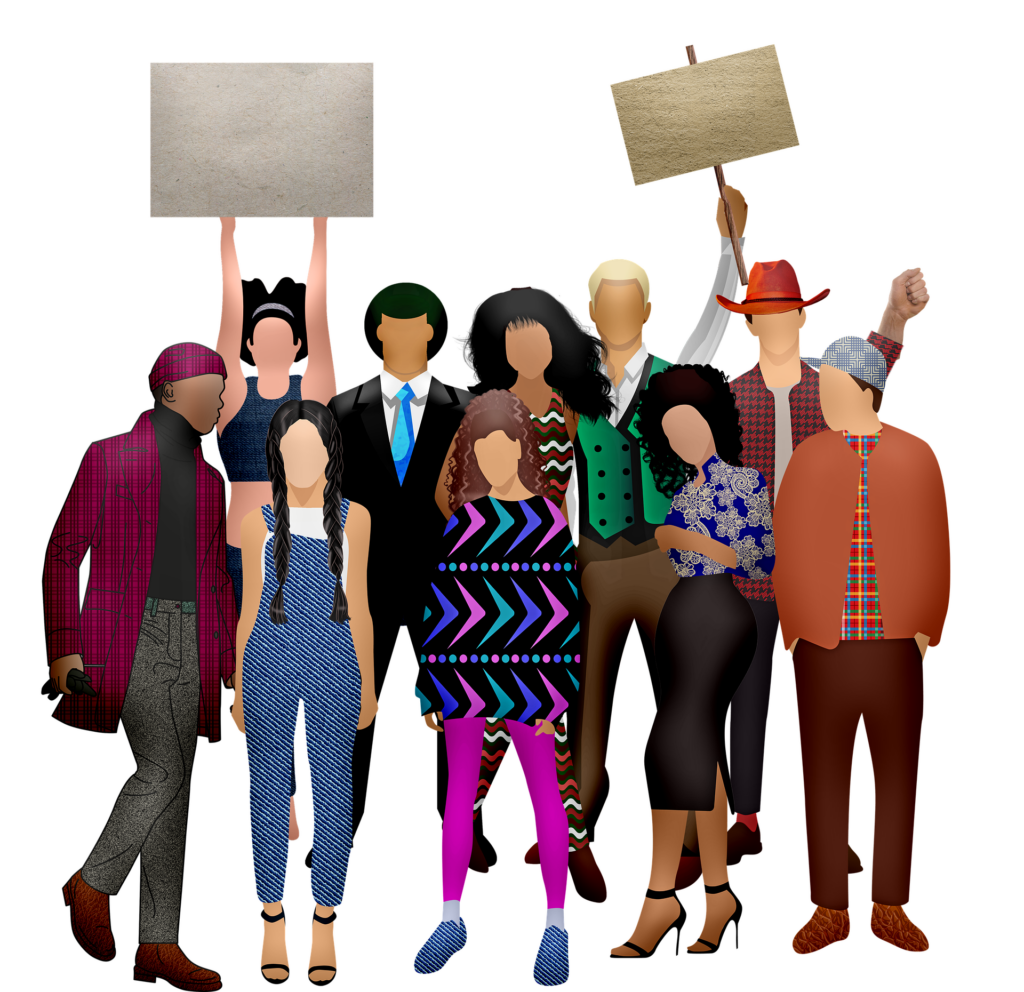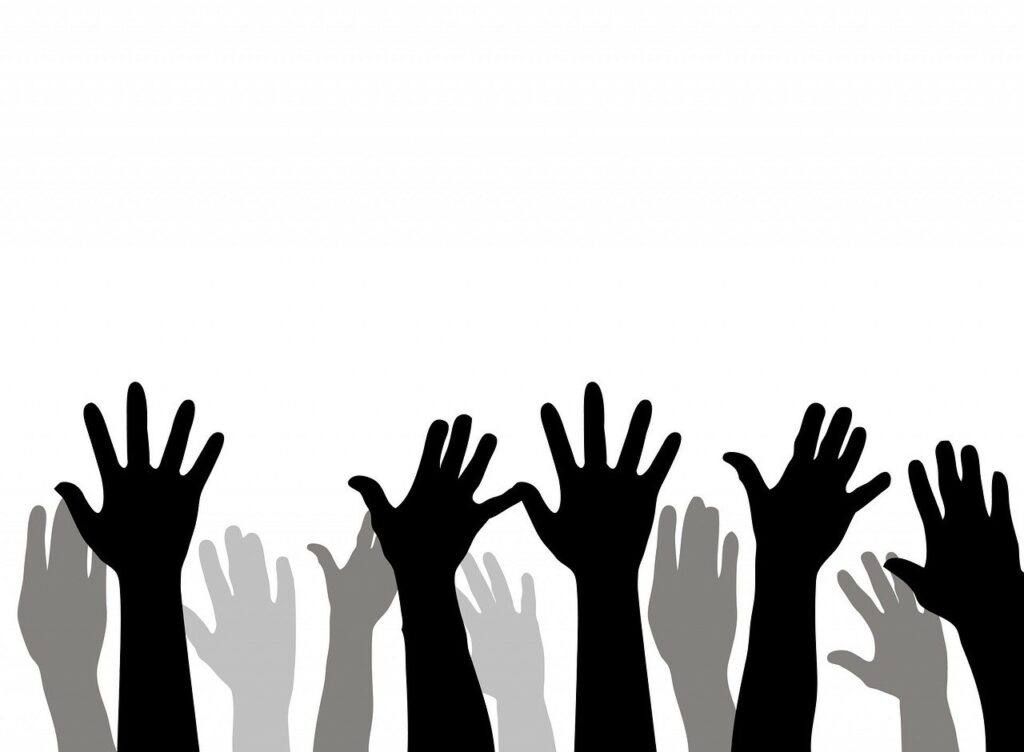March for Our Lives
The Marjory Stoneman Douglas High School massacre is considered one of the deadliest shootings in American history. The tragedy empowered Parkland, Florida student survivors to propel national debate about gun control and school safety. Challenging legislative inaction, the students organized the #NeverAgain campaign and, six weeks after the shootings, led the March for Our Lives movement. March for Our Lives was organized in over 800 cities worldwide with approximately two million attendees.
March for Our Lives
 Essential Questions
Essential Questions
The following essential questions provide a framework for exploring this unit’s main ideas and themes:
- What can we learn from the Parkland students about creating change? What strategies did they use?
- How have youth led movements in the past influenced current organizing efforts by students today?
New Jersey Student Learning Standards
The materials and suggested lesson plan below satisfy the following New Jersey Student Learning Standards:
6.1.12.CivicsCM.14.a ? ×
×
6.1.12.CivicsDP.14.a ? ×
×
6.1.12.CivicsPD.16.a ? ×
×
6.1.12.HistoryUP.16.a ? ×
×
Lesson Module
![]() Goal and Learning Objectives: The goal of this module is to teach students about the history of gun control, youth movements in the US, and how young people influence politics in our time. Students will learn about student organizing efforts of the Marjory Stoneman Douglas students, the history of youth movements, and the connection to voting and civic participation.
Goal and Learning Objectives: The goal of this module is to teach students about the history of gun control, youth movements in the US, and how young people influence politics in our time. Students will learn about student organizing efforts of the Marjory Stoneman Douglas students, the history of youth movements, and the connection to voting and civic participation.
Content: This module provides resources and information designed to explore the important role that younger generation’s play in society and in politics. In this module, we offer resources, information, and ideas for examining student‐led movements and the debate surrounding gun control and the Second Amendment.
Activity I: History
Context: On February 14, 2018, one of America’s most deadly mass shootings took place in Parkland, Florida, leaving 17 students dead and 17 more injured. The students that survived the massacre at Marjory Stoneman Douglas High School vowed to end the two decades of legislative inaction that allowed mass shootings, especially in schools, to continue to take place throughout the United States. These students successfully captured the attention of Congress, the White House, the media, and the American people through their relentless advocacy and resilience in the face of tragedy. Immediately following the shooting, the students launched the #NeverAgain campaign, which is a national movement to end gun violence that quickly picked up traction through social media.
 Six weeks later, the March for Our Lives protest took place, and is perhaps the most famous youth movement in recent history, with approximately 2 million attendees in over 800 cities around the world. Students such as Emma “X” González and David Hogg helped reignite the national debate about school safety and gun control by directly confronting legislators and speaking truth to power in spite of the negative backlash they faced. Florida Senator Marco Rubio credited the survivors of the Parkland shooting with doing more to address gun violence in five weeks “than has been done in 15 years.”
Six weeks later, the March for Our Lives protest took place, and is perhaps the most famous youth movement in recent history, with approximately 2 million attendees in over 800 cities around the world. Students such as Emma “X” González and David Hogg helped reignite the national debate about school safety and gun control by directly confronting legislators and speaking truth to power in spite of the negative backlash they faced. Florida Senator Marco Rubio credited the survivors of the Parkland shooting with doing more to address gun violence in five weeks “than has been done in 15 years.”
Instructions: Use the materials to introduce the class to the history of the event. Have students break into groups and explore the gun control bill passed after the Parkland shooting. Have them also examine the Second Amendment of the United States. Introduce them to the gun control legislation that was passed after the shooting and have them read the Second Amendment. If time permits, have them do a document analysis activity on one or both of the documents. Test your students’ comprehension with a Kahoot!
Activity II: Key Figures
![]() Instructions: This activity gives students the opportunity to learn about key figures involved in the March for Our Lives movement. Divide the class into small groups and have them discuss our Key Figures page, the PDF of the New York Magazine article, and/or the March for Our Lives: 2020 Impact Report. Have students answer the discussion questions and share their responses with the whole class.
Instructions: This activity gives students the opportunity to learn about key figures involved in the March for Our Lives movement. Divide the class into small groups and have them discuss our Key Figures page, the PDF of the New York Magazine article, and/or the March for Our Lives: 2020 Impact Report. Have students answer the discussion questions and share their responses with the whole class.
- Key Figures
- New York Magazine Profile of Parkland Organizers
- March for Our Lives: 2020 Impact Report
Discussion Questions (Choose one of the following):
- There were many changemakers involved in the March for Our Lives movement. How did their roles add to the success of their activism?
- Using the quantitative data in the March for Our Lives: 2020 Impact Report, what are three results of the movement led by youth activists?
Activity III: Youth Organizing and Voter Registration Drives
 Instructions: Have students pick one of the following topics and then have them write out a S I T worksheet:* a fact they find Surprising, a fact they find Interesting, and a fact they find Troubling. Then, have them take turns sharing on their topic.
Instructions: Have students pick one of the following topics and then have them write out a S I T worksheet:* a fact they find Surprising, a fact they find Interesting, and a fact they find Troubling. Then, have them take turns sharing on their topic.
*The S I T worksheet was created by Facing History and Ourselves – a website that offers lessons, teaching resources, and worksheets for teachers to use in the classroom.
Activity IV: March for Our Lives and Gun Control Action
Instructions: March for Our Lives was influenced by youth led movements of the past, yet carved out its own path. The organizer’s use of social media during the movement is just one example. This activity will allow students to design their own way of getting important messages to the masses.
Suggested experiential learning activities for students (choose one of the following):
- Create a mock social media post (ie. TikTok or Instagram) for a movement of your choice. The post should include photos/video with text.
- Design an infographic/poster connecting other youth led movements to the March for Our Lives movement.
- Create an inspirational speech for a protest that addresses the importance of March for Our Lives in the US.
Students can use one or more of the topics from Activity 3 for inspiration:
Materials
![]() Don’t have time to use these activities? Do you already have a lesson plan for this topic?
Don’t have time to use these activities? Do you already have a lesson plan for this topic?
Here are links to materials presented in the activities that can be used any way you see fit:
Activity One: Timeline, March for Our Lives Mission and Story, Parkland Bill Summary, Second Amendment
Activity Two: Key Figures, New York Magazine Profile of Parkland Organizers, March for Our Lives: 2020 Impact Report
Activity Three: S I T worksheet, 1968 Chicano Student Walkout, Student Walkout Rights, Black Lives Matter and Voting, Save the Last Word for Me (Facing History and Ourselves)
Activity Four: 1968 Chicano Student Walkout, Student Walkout Rights, Black Lives Matter and Voting


